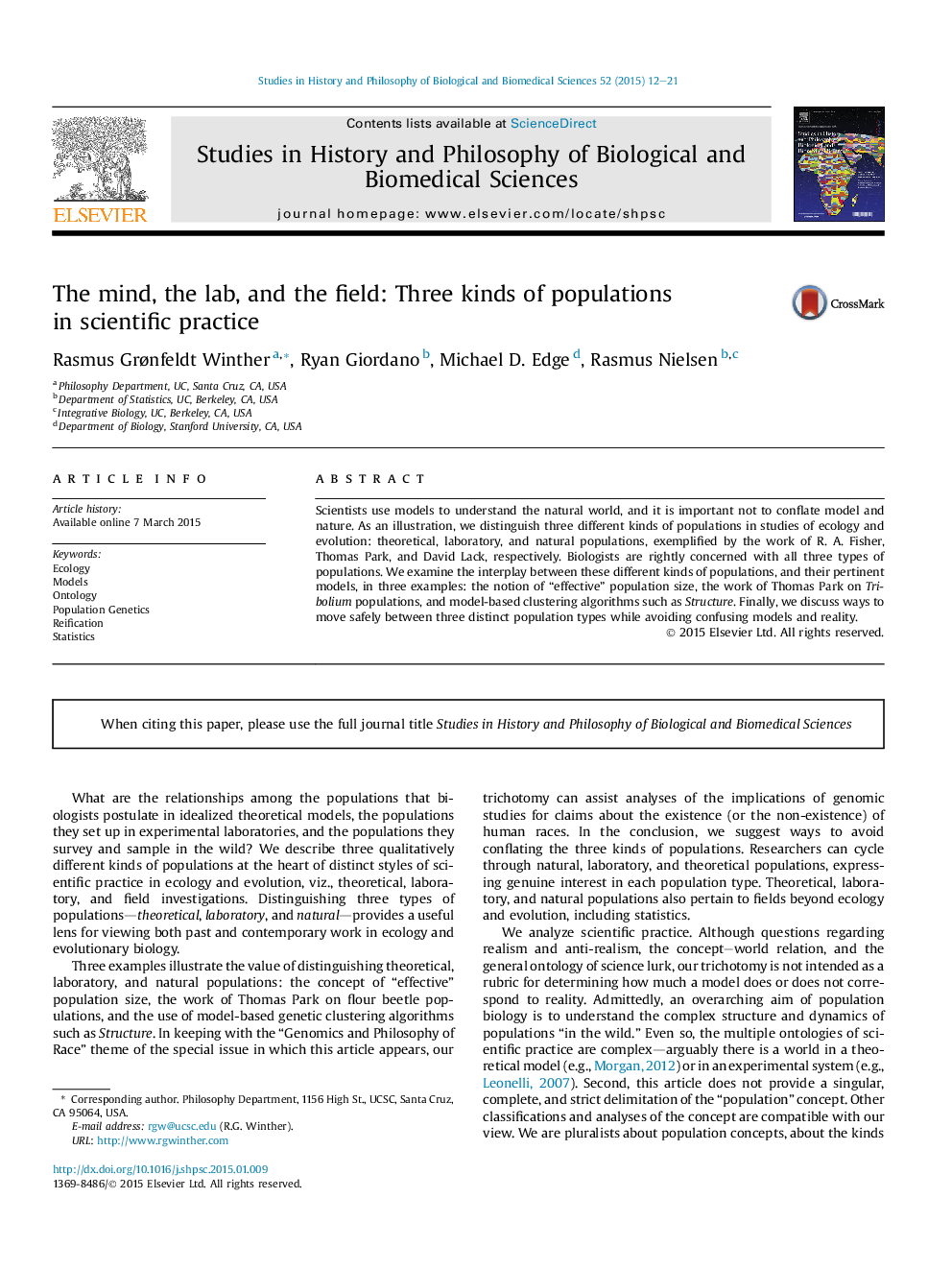| کد مقاله | کد نشریه | سال انتشار | مقاله انگلیسی | نسخه تمام متن |
|---|---|---|---|---|
| 1161646 | 1490513 | 2015 | 10 صفحه PDF | دانلود رایگان |
• We consider three kinds of populations studied in ecology and evolutionary biology.
• We distinguish theoretical, laboratory, and natural populations.
• These kinds of populations are exemplified in the work of Fisher, Park, and Lack.
• We apply our scheme to three examples.
• Our scheme clarifies the process of translating insights among population types.
Scientists use models to understand the natural world, and it is important not to conflate model and nature. As an illustration, we distinguish three different kinds of populations in studies of ecology and evolution: theoretical, laboratory, and natural populations, exemplified by the work of R. A. Fisher, Thomas Park, and David Lack, respectively. Biologists are rightly concerned with all three types of populations. We examine the interplay between these different kinds of populations, and their pertinent models, in three examples: the notion of “effective” population size, the work of Thomas Park on Tribolium populations, and model-based clustering algorithms such as Structure. Finally, we discuss ways to move safely between three distinct population types while avoiding confusing models and reality.
Journal: Studies in History and Philosophy of Science Part C: Studies in History and Philosophy of Biological and Biomedical Sciences - Volume 52, August 2015, Pages 12–21
